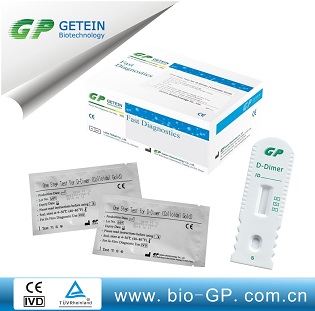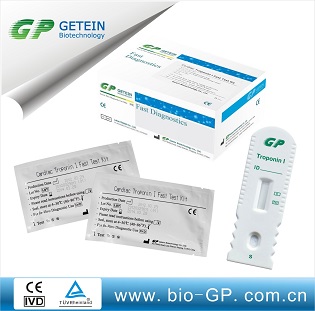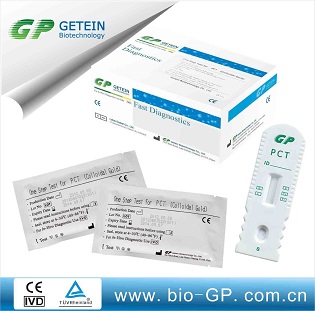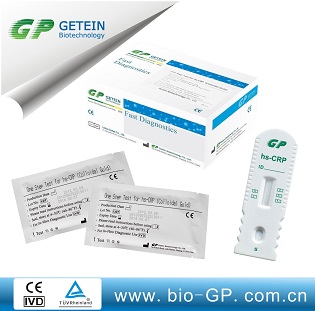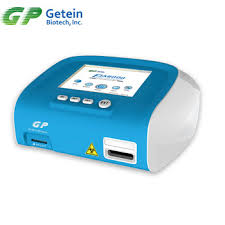Product information
In recent years, the clinical value of the NT-proBNP (N-terminal pro B-type natriuretic peptide) test in the diagnosis of congestive heart failure has exceeded expectations, given its broader significance. on the diagnosis, monitoring, treatment, prognosis and screening of many heart failure conditions and syndromes other than the heart in modern medicine.
1. Biological Value of NT-proBNP
NT-proBNP is a peptide consisting of 76 amino acid residues. The precursor of NT-proBNP is a pre-pro-peptide consisting of 134 amino acid residues. The pre-pro-peptide cleaved to proBNP (108 amino acid residues—a precursor molecule stored in secretory granules in muscle cells) and a signal peptide fragment (26 amino acid residues). When released into the bloodstream, proBNP is hydrolyzed by the protease enzyme furin to NT-proBNP (76 amino acid residues, not biologically active) and BNP (32 amino acid residues, biologically active). 3]. In humans, NT-proBNP and BNP are present in large concentrations in left ventricular muscle, but also in small amounts in atrial tissue as well as in right ventricular muscle. BNP is eliminated by multiple mechanisms, including the involvement of receptors, endopeptidase enzymes, and multiple organs, including the kidney; while NT-proBNP is excreted passively, mainly by the kidneys [3]. Because NT-proBNP has a half-life of about 60-120 min, which is longer than that of BNP (18 min) and is more stable than BNP, NT-proBNP is more sensitive and It is now more commonly used than BNP in clinical diagnosis [3].
2. Designation
The plasma NT-proBNP test may be ordered to:
a. Diagnosis and differential diagnosis of heart failure:
- Identify or rule out heart failure in patients with acute dyspnea.
- Diagnose or exclude heart failure in patients at risk for heart failure (diabetes, hypertension, coronary artery disease), patients with diagnosed heart failure, differential diagnosis of heart failure with other other medical conditions (eg, lung disease).
- Diagnosis of heart failure when clinical or ultrasound examination is difficult to perform (e.g., obese, very old, or pediatric patients).
- Diagnosis of heart failure in pediatric and neonatal patients with congenital heart disease.
- Differential diagnosis of elevated NT-proBNP in diseases other than heart failure: cardiomyopathy (hypertrophic cardiomyopathy, infiltrative cardiomyopathy, myocarditis), valvular heart disease (aortic stenosis and regurgitation), stenosis and mitral regurgitation), atrial arrhythmias, anemia, serious illness (septic shock, burn shock, respiratory distress syndrome in adults), ischemic stroke, cardiopulmonary syndromes ( dyspnea during sleep, pulmonary hypertension, congenital heart disease).
b. Monitor progress and effectiveness of heart failure treatment:
- Long-term follow-up of patients with chronic heart failure.
- Assess the risk of recurrent heart failure, drug toxicity, or treatment efficacy.
c. Heart failure prognosis:
- Prognosis of heart failure in patients with dyspnea or diagnosed heart failure.
- Prognosis of heart failure in pediatric and neonatal patients with congenital heart disease.
d. Screening (screening) for heart failure:
- Screening in the general population [2], paying special attention to groups of subjects at high risk of heart disease such as the elderly over 60 years old, patients with a history of diabetes, hypertension, coronary artery disease, etc.
- Screening for heart failure in patients before and after surgery on other organs.
- Screening for early detection of heart failure risk in subjects at risk of cardiovascular disease (obesity, diabetes, hypertension, coronary artery disease, kidney failure).
3. Normal values and changes in heart failure
Normal values of plasma NT-proBNP vary with age: < 50 years old is 50 pg/mL, 50-75 years old is 75-100 pg/mL and > 75 years old is 250-300 pg/mL; a common cut-off point for both sexes is 125 pg/mL.
Plasma NT-proBNP concentrations vary with the degree of heart failure:
3.1. The optimal cut-off for NT-proBNP to exclude chronic heart failure is (Table 1):
Table 1: Cut-off score of plasma NT-proBNP (pg/mL) to exclude chronic heart failure
| Classify | Optimal cutting point | Sensitivity (%) | Specificity (%) | Diagnostic value (+) calculated (%) | Diagnostic value (-) calculated (%) |
| Cut-off point to exclude chronic heart failure | < 125 pg/mL | 88 | 92 | 80,6 | 96,7 |
3.2. The optimal cut-off point of NT-proBNP to exclude acute heart failure in patients with dyspnea is (Table 2):
Table 2: Optimal cut-off score for NT-proBNP to exclude acute heart failure in patients with dyspnea [7]
| Classify | Optimal cutting point | Sensitivity (%) | Specificity (%) | Diagnostic value (+) calculated (%) | Diagnostic value (-) calculated (%) |
| Cut-off point to exclude chronic heart failure | < 300pg/mL | 99 |
60 |
77 |
98 |
3.3. The optimal cut-off point of NT-proBNP for the diagnosis of acute heart failure in patients with dyspnea by age is (Table 3):
Table 3: Optimal cut-off score of NT-proBNP for diagnosis of acute heart failure in patients with dyspnea by age [7]
| Classify | Optimal cutting point | Sensitivity (%) | Specificity (%) | Diagnostic value (+) calculated (%) | Diagnostic value (-) calculated (%) |
| < 50 years old |
< 450pg/mL | 97 |
93 |
76 |
99 |
| 50 75 years old | < 900pg/mL | 90 | 82 | 83 | 88 |
| > 75 years old | < 1800pg/mL | 85 | 73 | 92 | 55 |
4. Clinical significance
Plasma NT-proBNP levels may be increased in the following conditions and conditions:
1. Acute dyspnea/Acute heart failure: the optimal cut-off points of NT-proBNP for identifying acute heart failure for ages < 50, 50-75 and > 75 are 450, 900 and 1800 pg/mL. An age-independent cut-off point NT-proBNP <300 pg/mL has a negative diagnostic value for excluding acute heart failure of 98% [7]. In patients with acute heart failure, high NT-proBNP levels >5180 pg/mL have a predictive value of 76-day mortality of 95% [7].
2. Chronic heart failure: in patients with chronic heart failure, repeat measurement of NT-proBNP at each visit is necessary, the risk of severe prognosis when NT-proBNP levels are > 1000 pg/mL [1].
3. Stable and unstable myocardial ischemia: in patients with unstable myocardial ischemia, repeat measurement of NT-proBNP should be performed at 24-72 hours. /mL predicts a poor prognosis, NT-proBNP should be repeated weekly or monthly depending on the specific situation.
4. Pediatric and neonatal patients: the age cut-off point can be used as for people < 50 years of age with NT-proBNP levels > 450 pg/mL to identify heart failure and < 300 pg/mL to rule out heart failure. heart disease in children [6].
5. Renal disease: The increase in plasma NT-proBNP concentration in chronic kidney disease not only reflects a decrease in the excretion of this peptide but also confirms the presence of heart disease in these patients.
6. Heart failure in obese patients: in obese patients, plasma NT-proBNP levels decrease due to increased degradation and decreased NT-proBNP synthesis in cardiomyocytes [5]. Therefore, to identify heart failure in overweight or obese patients, the NT-proBNP cut-off points can be used for overweight patients of 491 pg/mL and for obese patients of 343 pg/mL. .
7. Diseases other than heart failure: NT-proBNP may be elevated in cardiomyopathy, valvular heart disease, atrial arrhythmias, anemia, severe illness (septic shock, shock from other causes), stroke caused by cerebral infarction, cardiopulmonary syndromes, patients with diabetes and hypertension. The common cause of elevated NT-proBNP in these diseases may be hypoxic or ischemic myocardial tissue.










